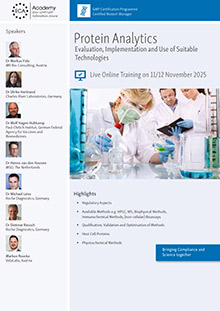Requirements for Risk Analyses in the Regulatory Submission Dossier: EMA's and FDA's Recommendations

Recommendation
5/6 February 2026
The EMA has published a new question & answer-(Q&A) paper together with the FDA at the end of 2014. This document answers questions on detailed requirements in connection with the documents concerning regulatory submissions. Among other things it answers questions on the topic risk analysis.
To the question "What types of risk assessments can be included in a regulatory submission?" the document provides a very pragmatic answer: It is up to the applicant himself to determine this. But it is stated explicitly that this information can be useful to aid the assessor/reviewer for determining how the applicant selected the specific formulation, manufacturing process and controls. The document mentions that the Agencies have seen risk assessments that have been used for the selection of in-process controls for example.
The question "What level of detail should be considered for a risk analysis related to process design in a regulatory submission?" is answered more precisely in the document. In the beginning the answer is rather general: The level of detail should be commensurate with the significance of the outcome of the risk analysis to the commercial manufacturing process and to the control strategy. Taking the example of a critical process step the document gives more concrete information. This information should contain the following:
- A statement of which risk analysis tool was used. If a novel risk analysis tool was used, a definition of this method along with an example of its use should be included.
- A comprehensive qualitative or quantitative summary of the outcome of the risk analysis (e.g. the risk priority number).
- The threshold value for the risk priority number (and an explanation for why such a threshold was chosen) leading to the selection of variables/parameters that warranted further study.
- A list of all risk priority numbers.
- Information on the way in which risk assessment activities were used to determine which process parameters and quality attributes are to be considered critical or non-critical.
Interestingly, the document also contains a notice to the regulators themselves. These should take the following into consideration before requesting additional details regarding a risk analysis: complexity of the dosage form, the commonality of the risks identified relative to products of the same type, and the amount of commercial scale manufacturing data available.
The answer to the question "What level of detail should be considered for a risk analysis related to product design in a regulatory submission?" is similar to the answer to the question on process design: The level of detail should depend on the risk presented by the formulation and dosage form. In the case of the product design, however, the topic "misuse" should also be taken into consideration. As an example a solid modified release oral formulation for an opioid is mentioned.
For further information please see the complete "Questions and answers on level of detail in the regulatory submissions".





